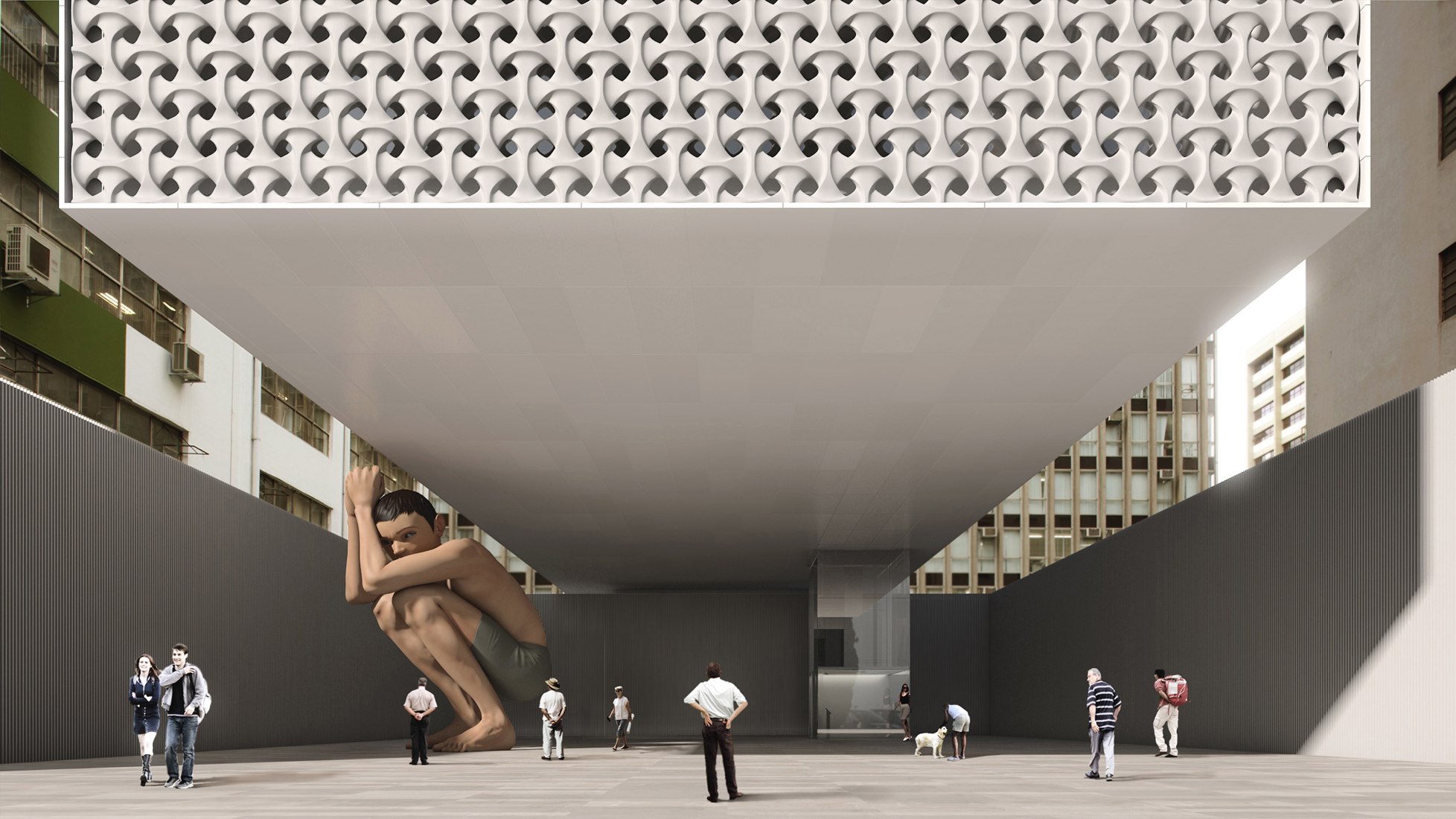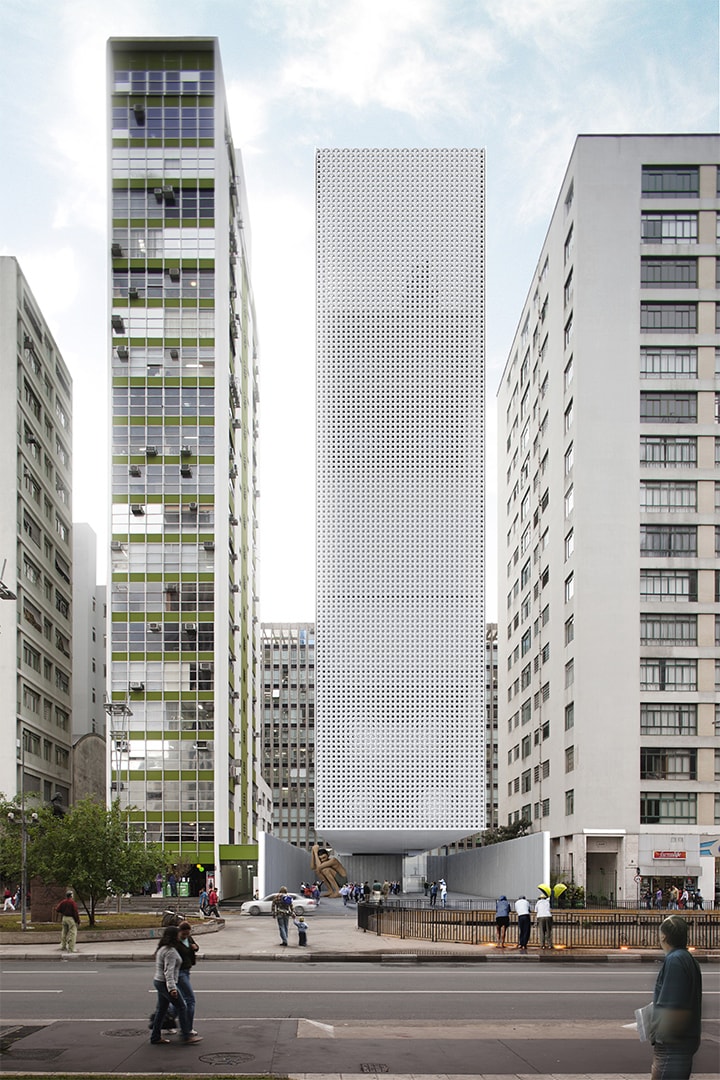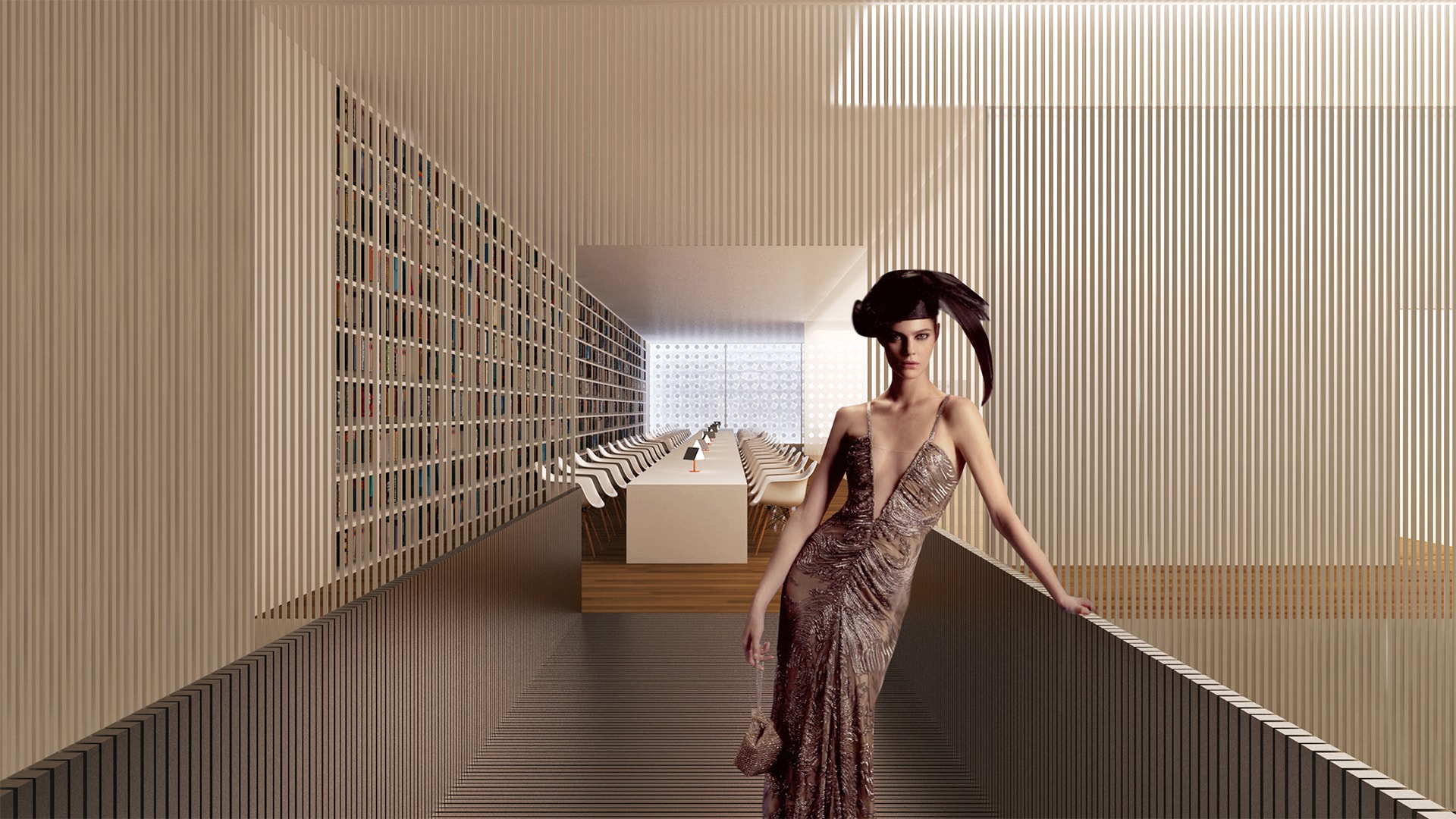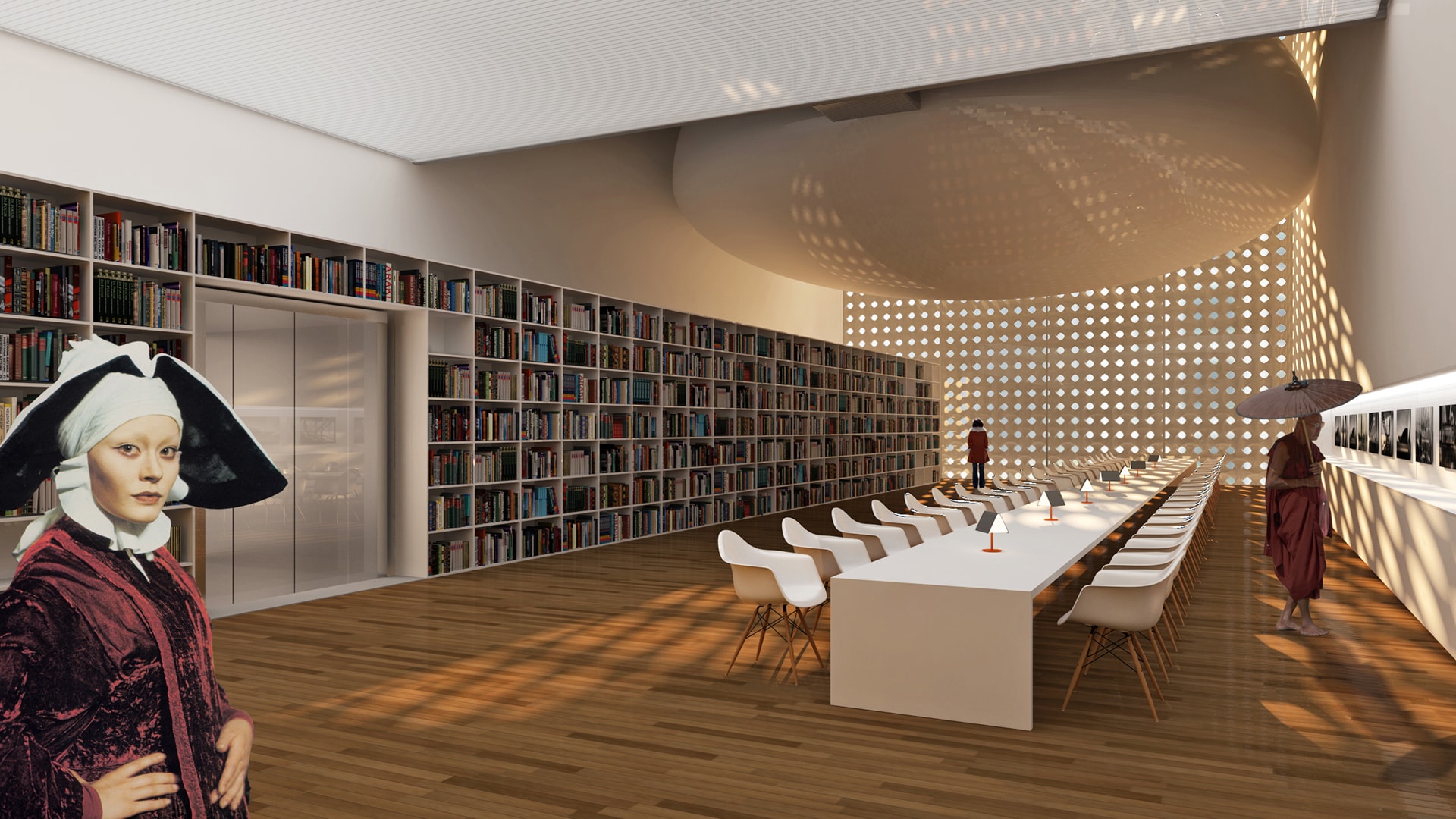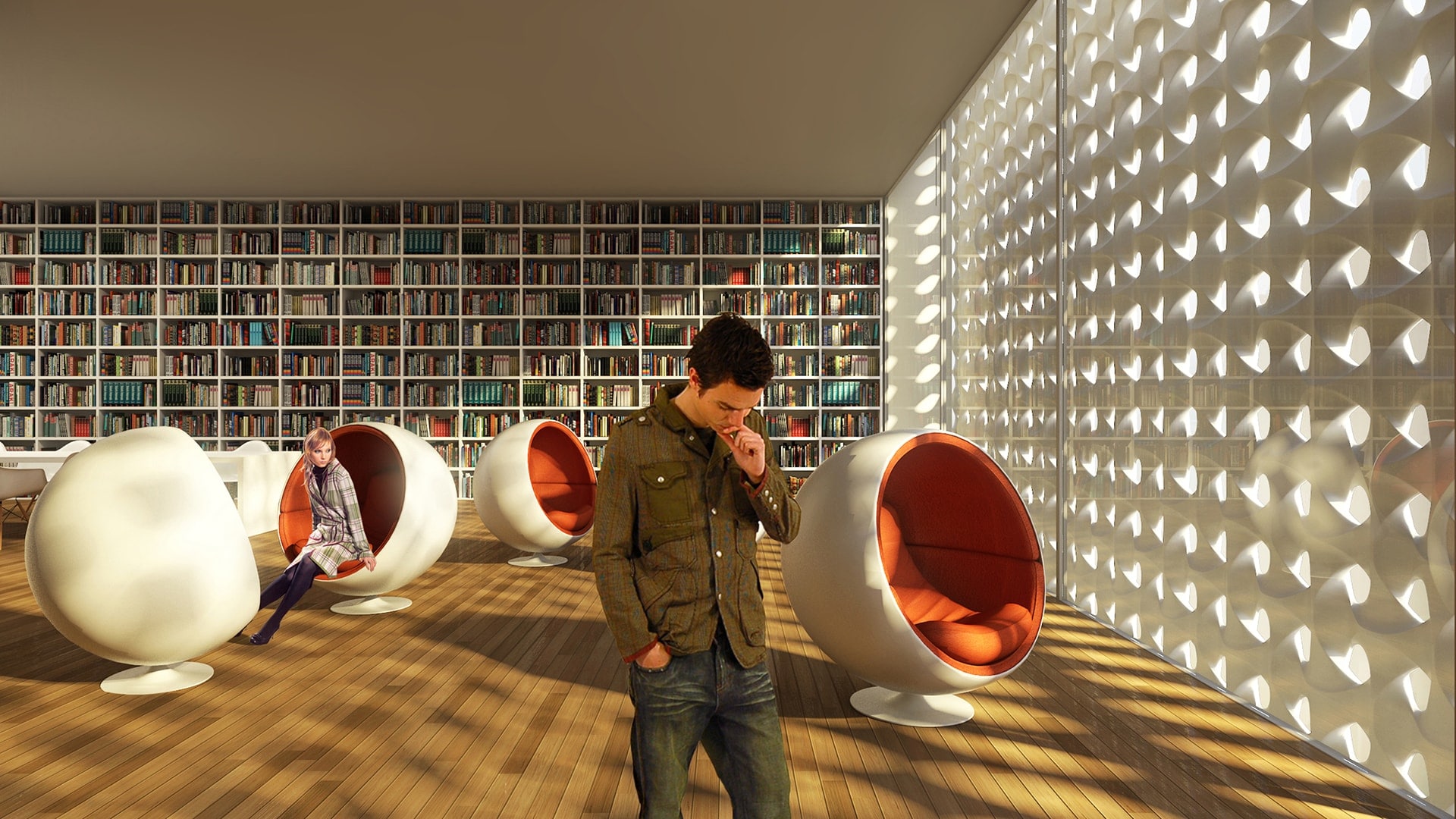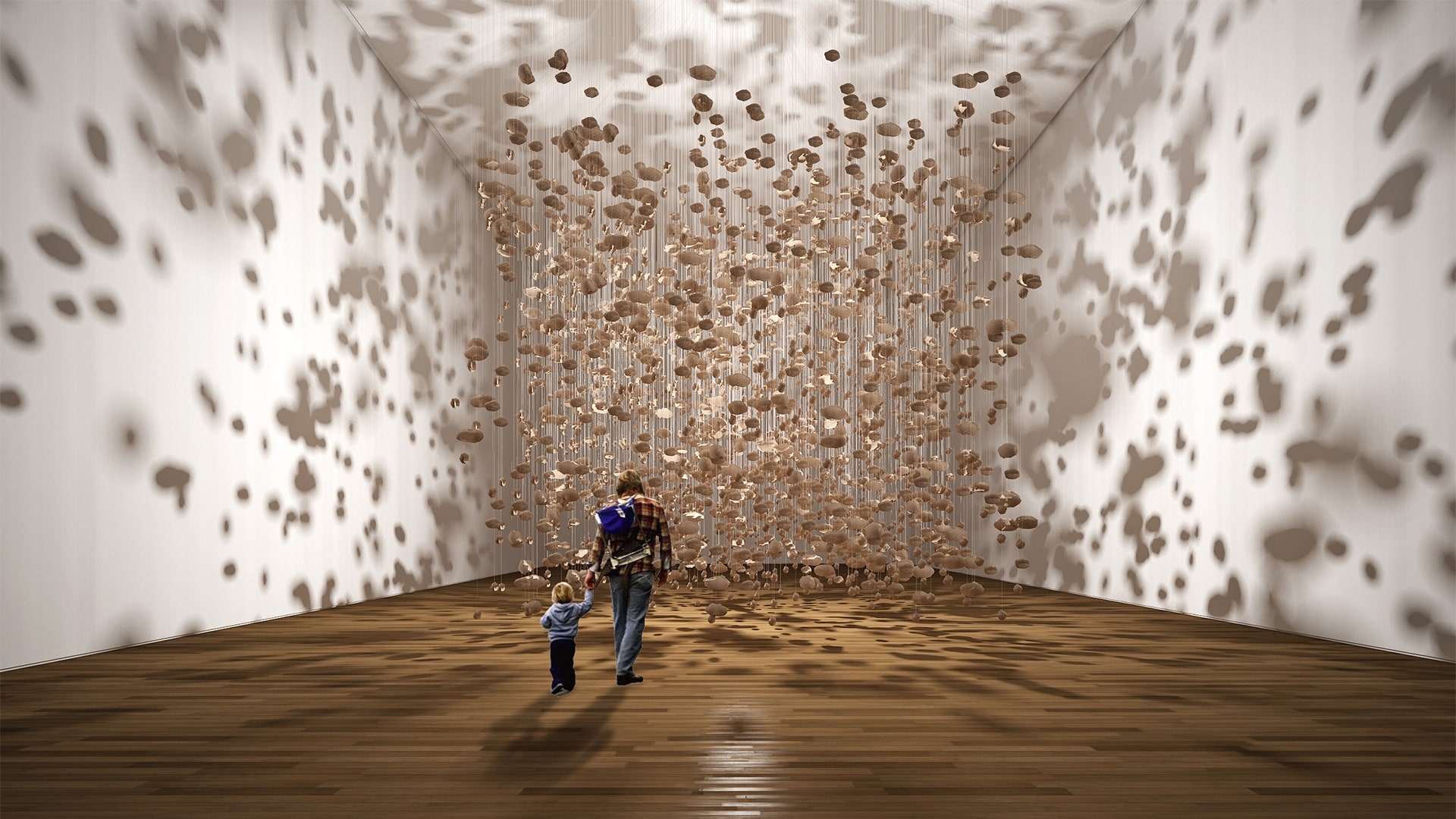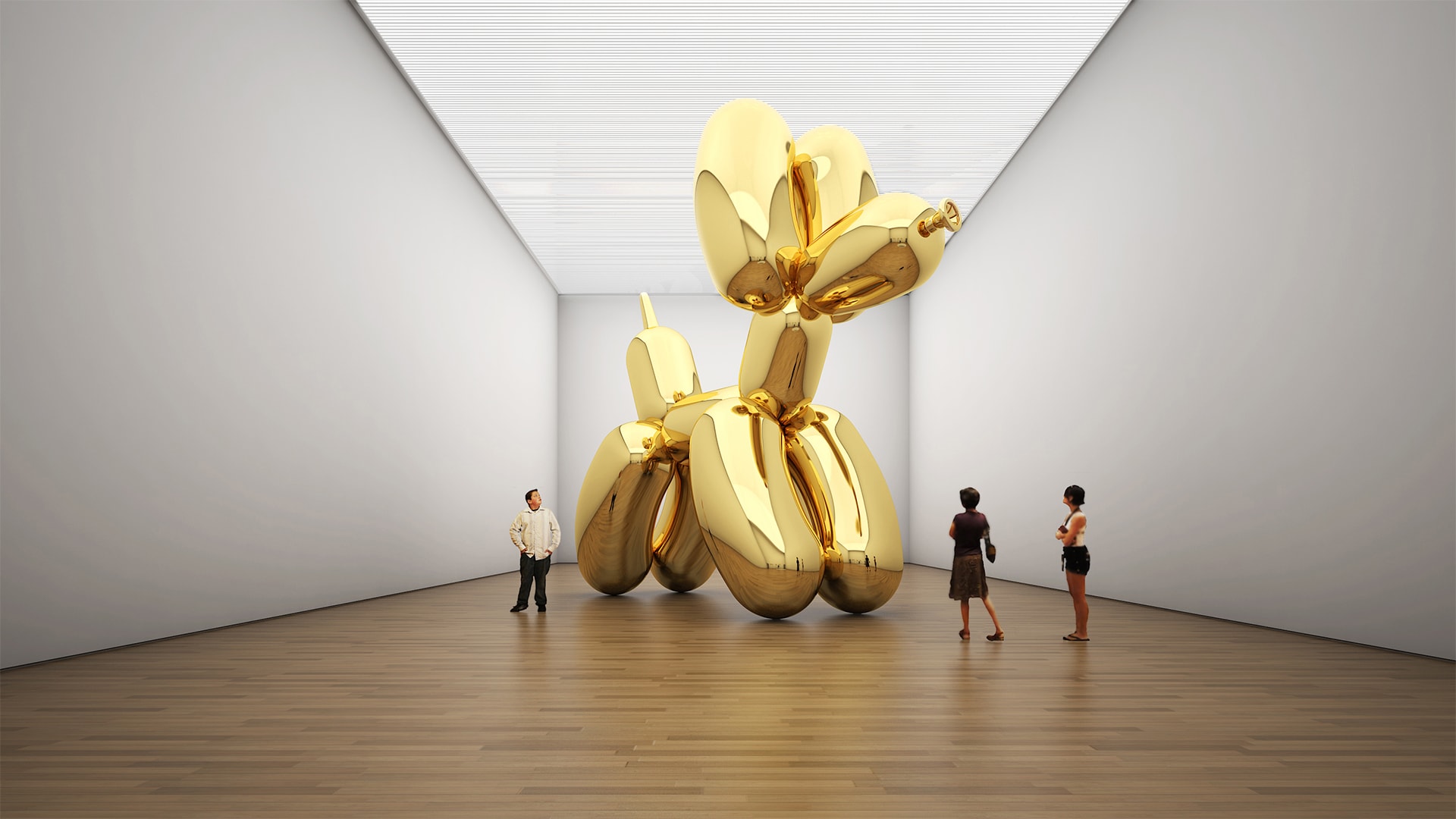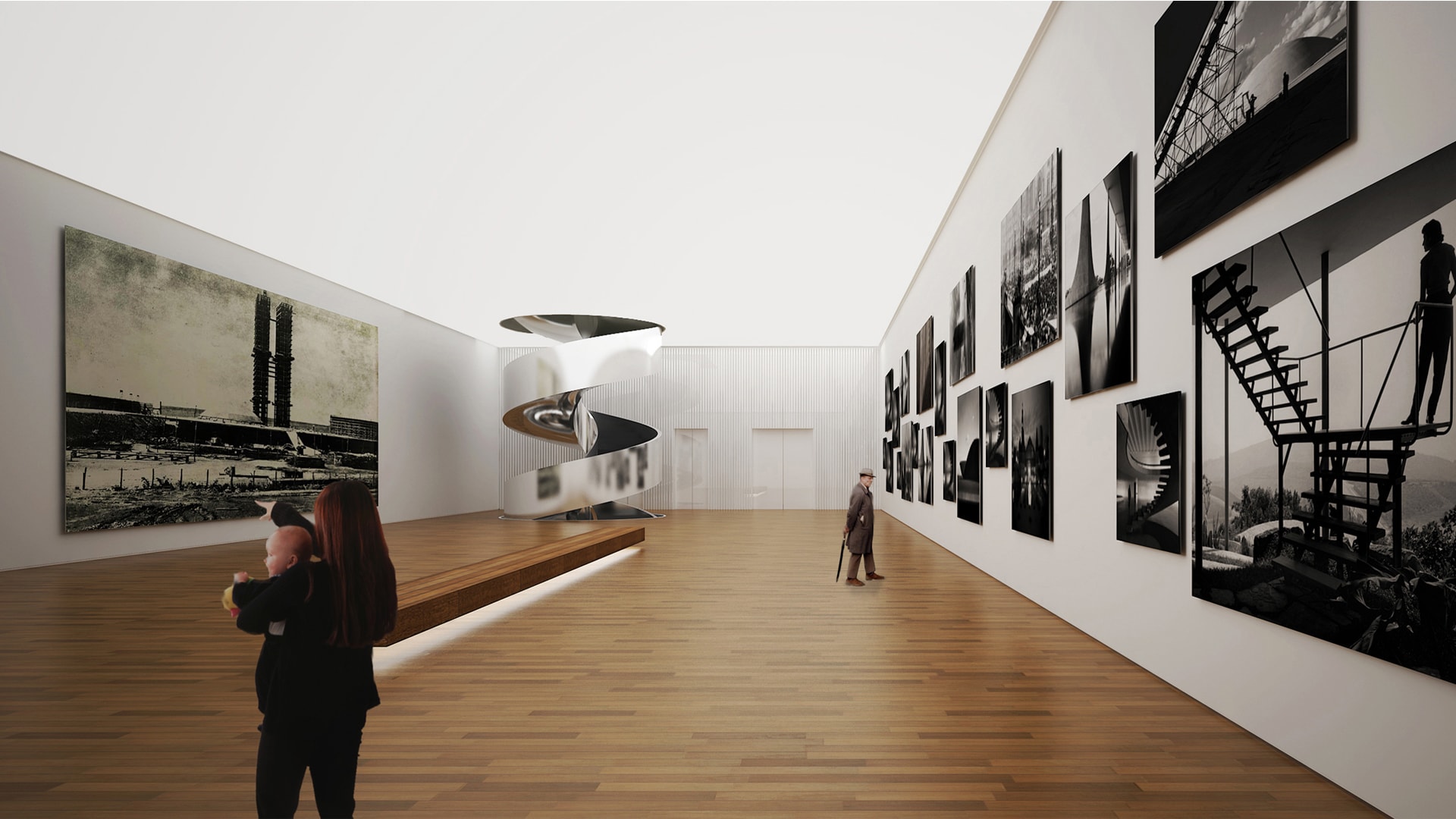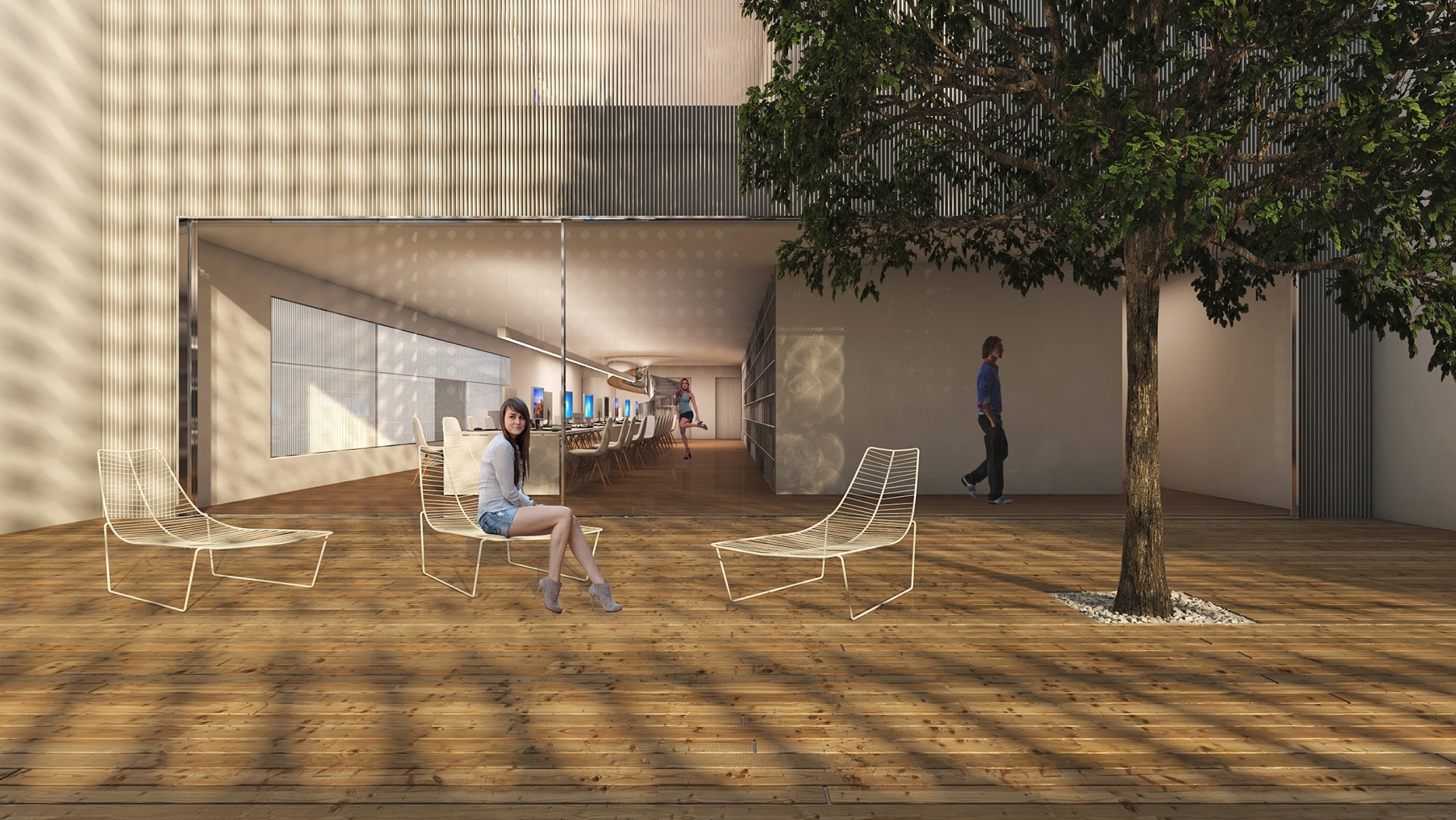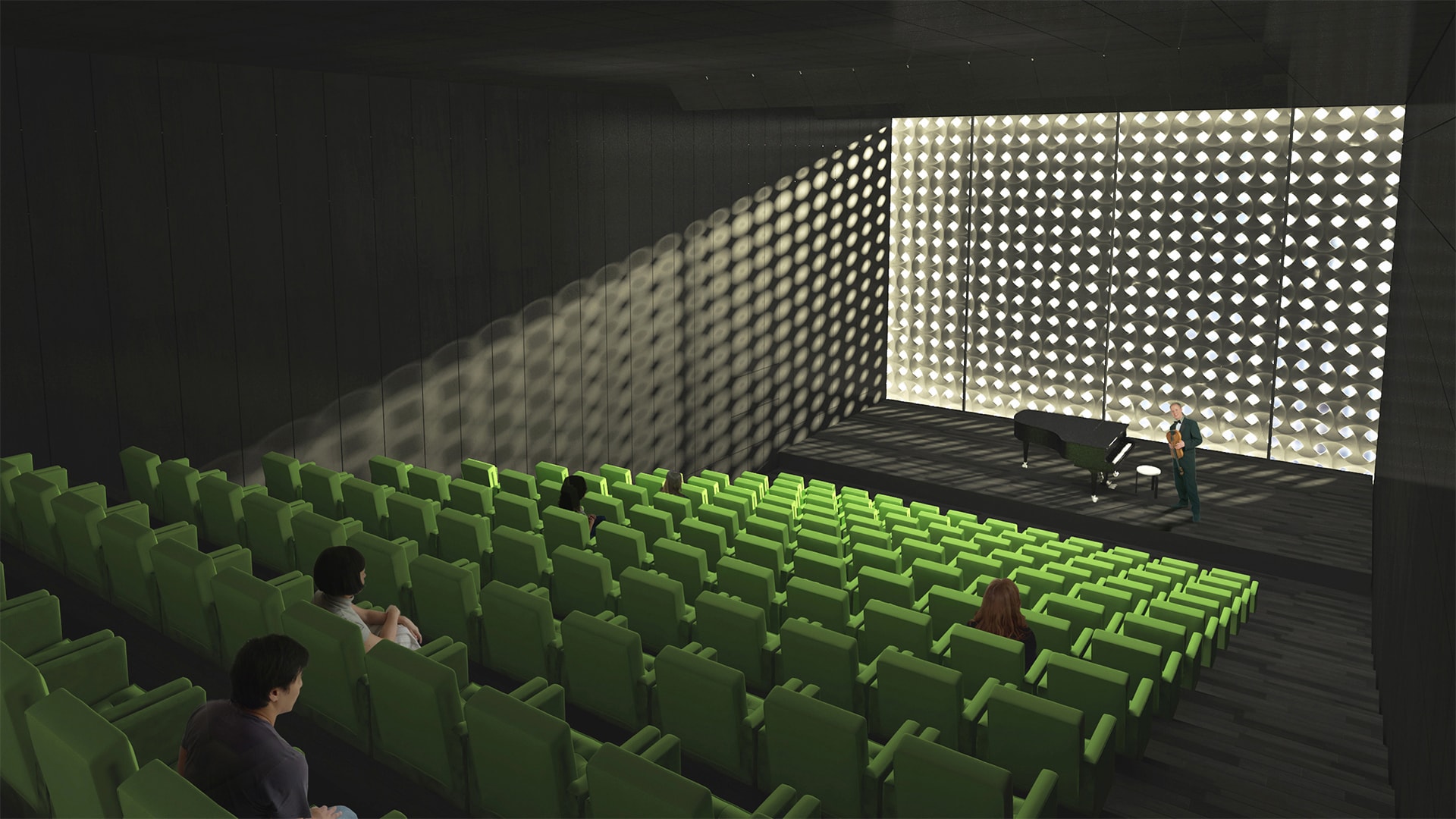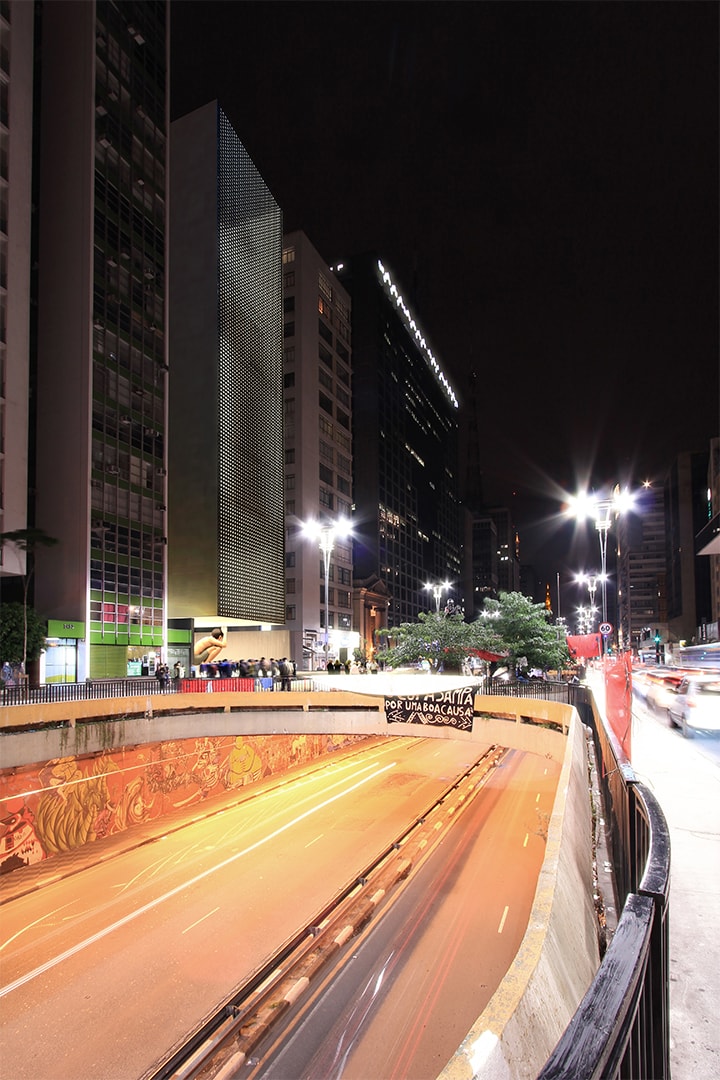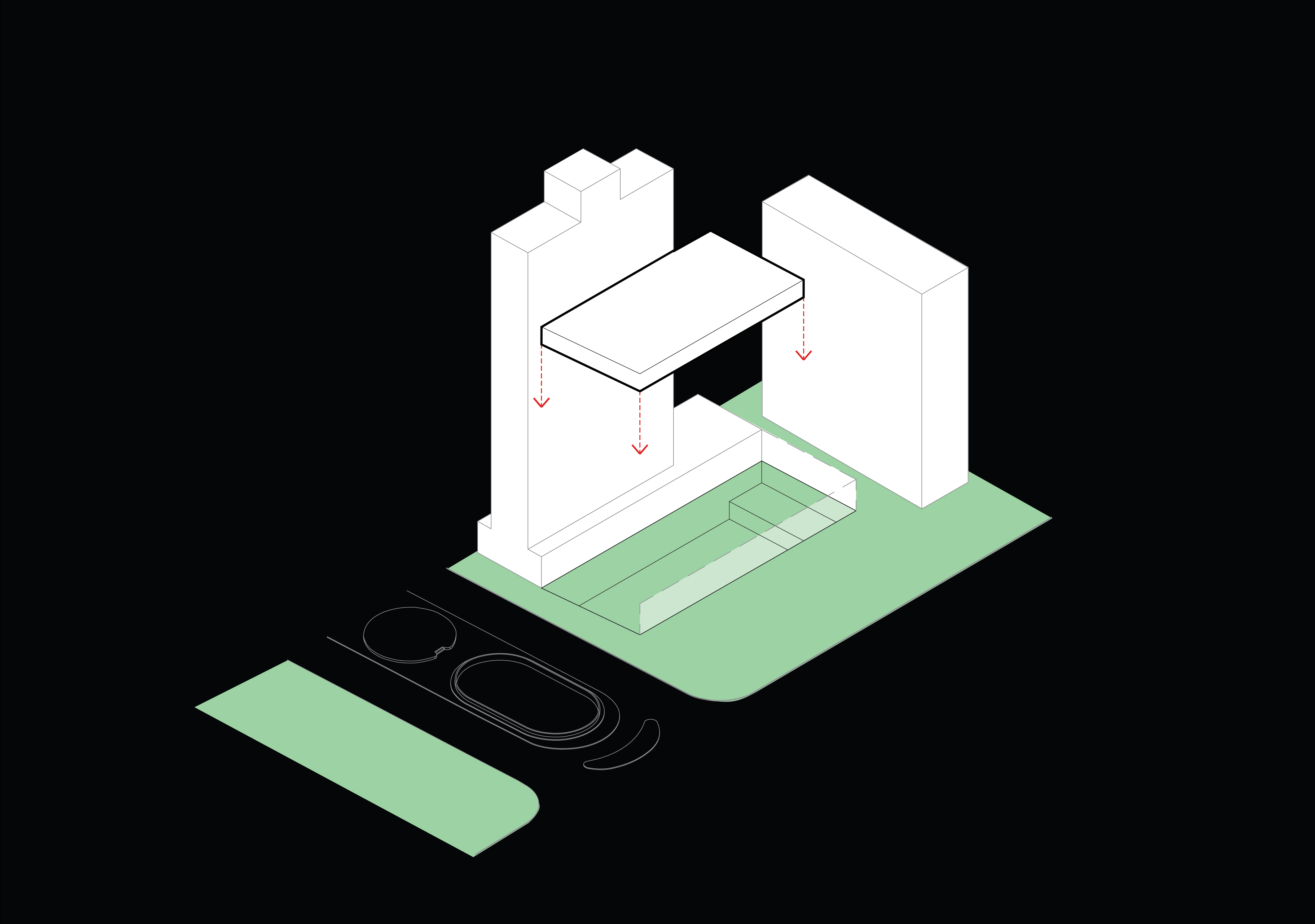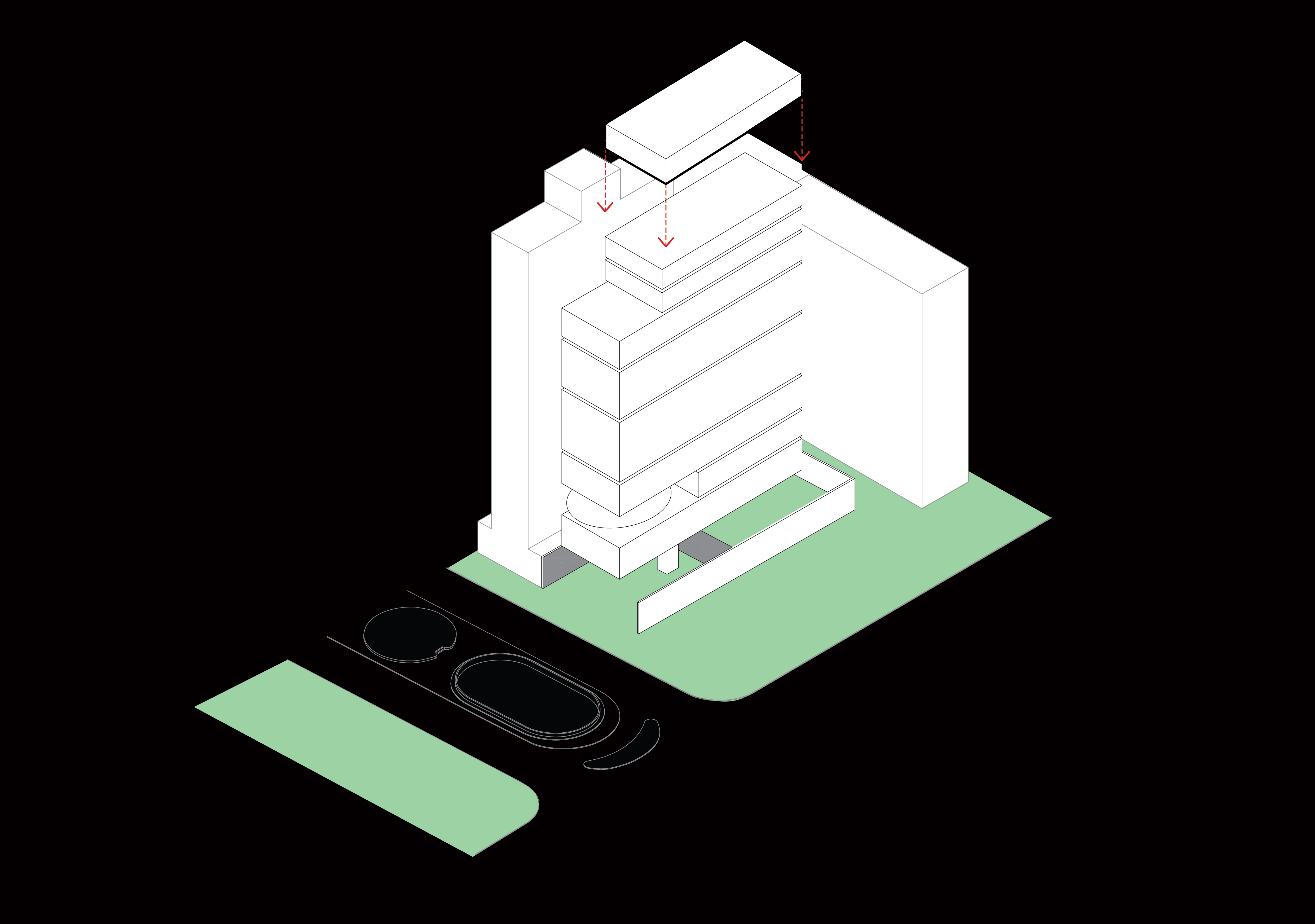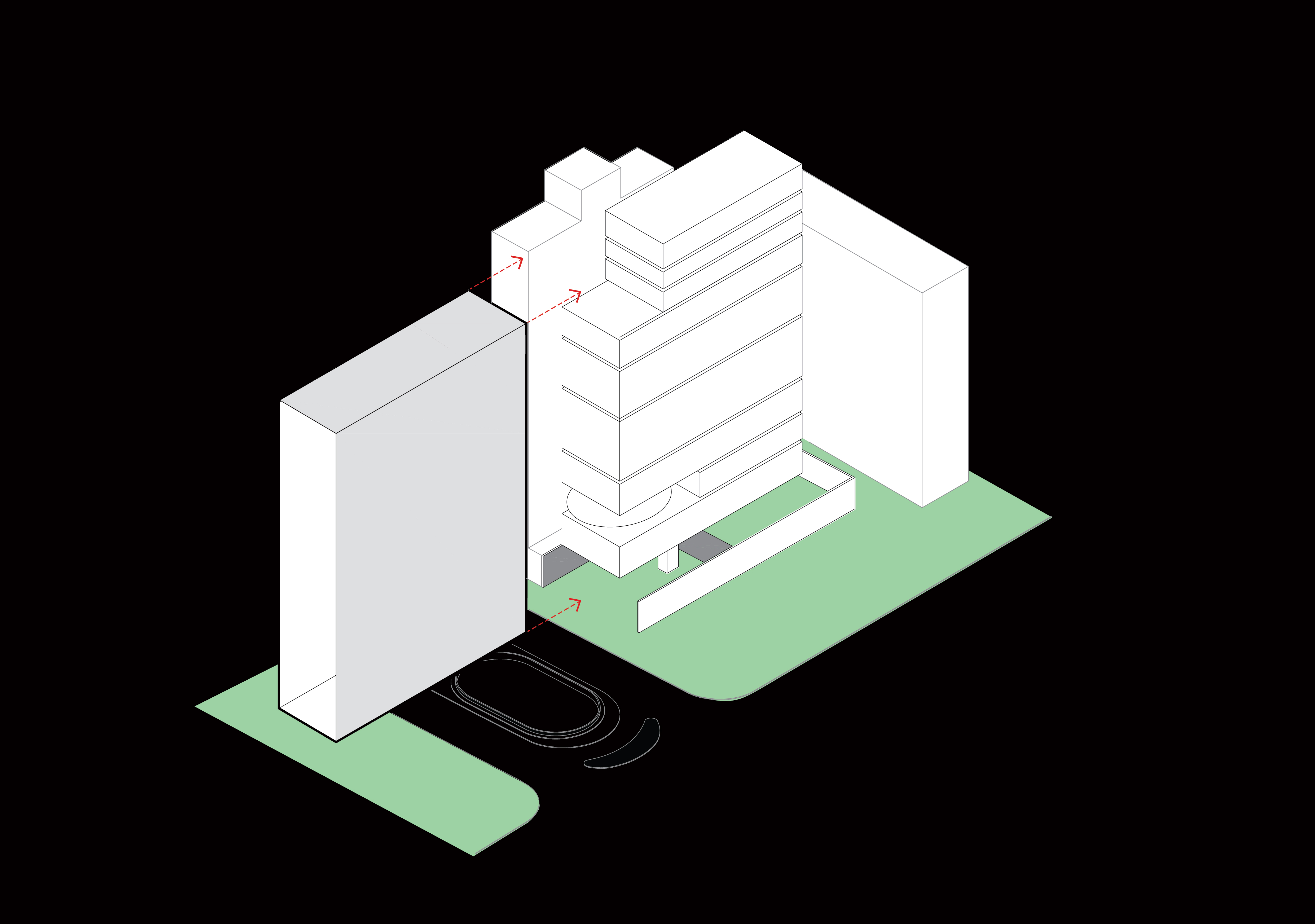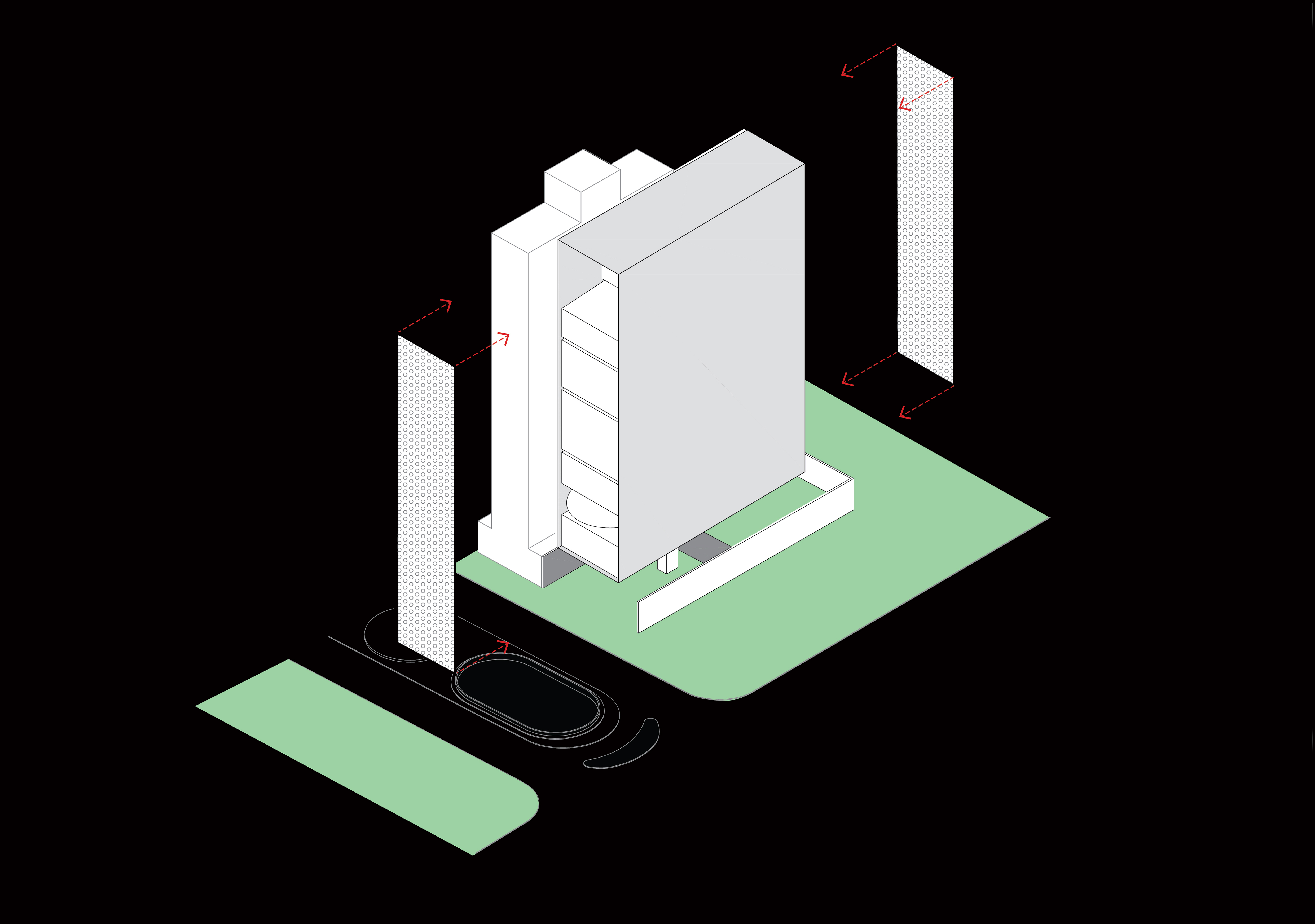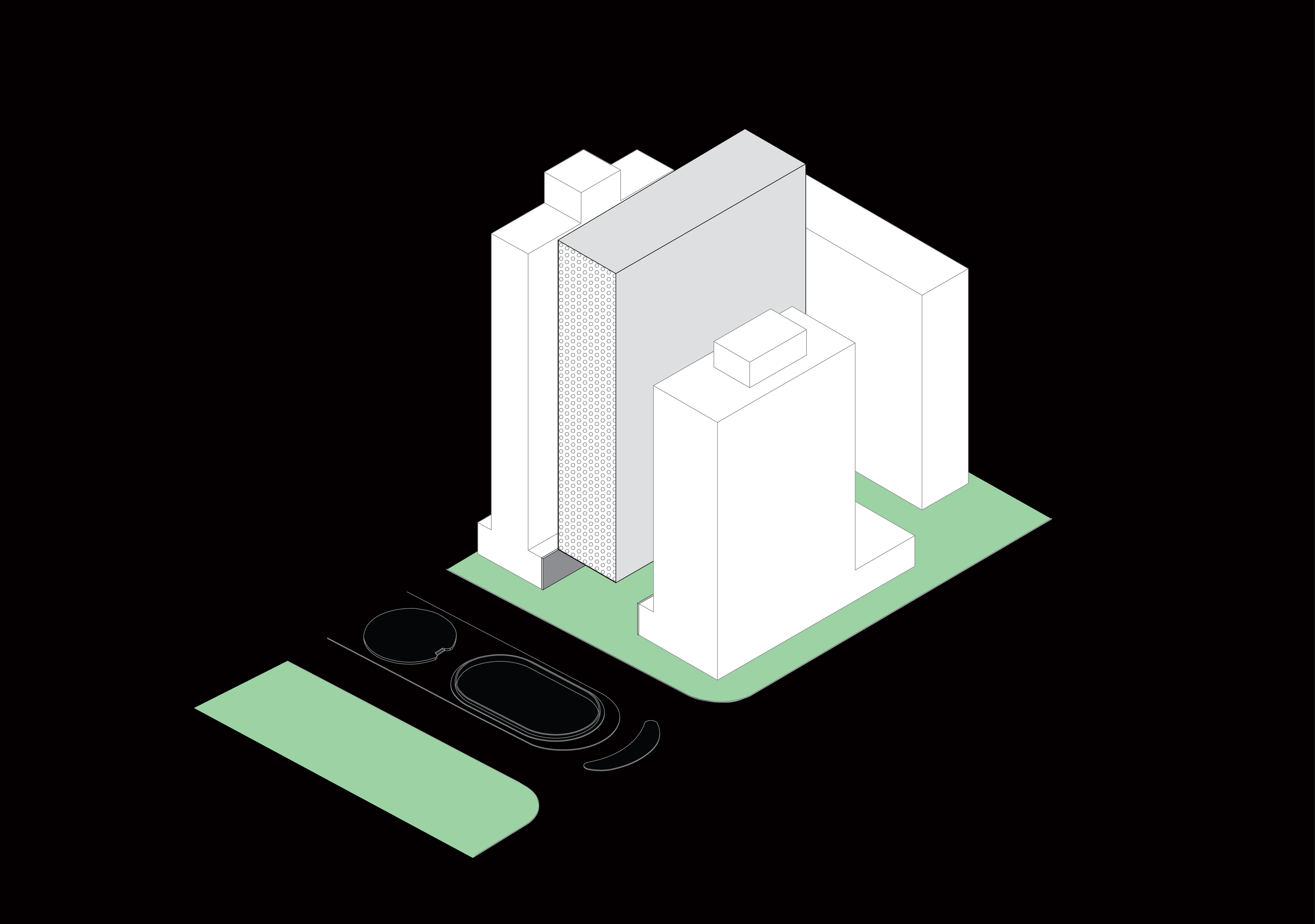Three decisions guided the development of this project:
01_The frontage of the lower volume, offering a space to the city, to Paulista Avenue: an arrival square. A pause, a shelter, perpendicular to the frenetic rhythm of the people, of the cars. A foyer.
A volume divides the internal and the external, a volume that concentrates access to Moreira Salles Institute: a ramp that accesses the subsoil, the nuclei of elevators, the control. A formal reception.
02_ The exclusive use of the subsoil for the operational area. The location of the ground floor, characterized by easy access to the metropolitan urban transport system and endowed with an excellent condition of accessibility and mobility, led to the decision to reduce the number of parking spaces to the necessary minimum, in this way privileging the functioning of the Institute, permitting to adopt the large technical areas destined to receive, manipulate and prepare the works of art.
This decision gives value to the patrimony of the Institute in detriment to the automobile and permit that the same develops all of its potential as a means of diffusing information.
03_ A white monolith. A vertical element, uniform, that engages with Paulista Avenue through a veil, a work of art that represents a succession of uses, revealing the disposition of the program through its personality. As in photography, the light performs an important role in the creation of the image of the building, acting many times inversely in the interior and exterior: when it is external it reveals to the internal, the city; when it is internal, it reveals for the city, ethereally, the activities that it shelters.
On the ground floor a glass elevator takes the public quickly to the first floor – a foyer – with the function of grouping and distributing the visitors to their final destination.
About the foyer, the exhibit space develops into three floors and has a special room – the domus – responsible for the multimedia.
Between the exhibit space and the administrative area, we have the cinema, the library and the educational space. Its position permits that these activities attend to the visiting public as well as the employees of the Institute.
On the top, the administrative area formed by two floors, opens to an uncovered terrace, making possible a work environment that is tranquil and silent, but is always connected visually to the city through the hollowed-out elements that compose the façade.
Studio MK27
PROJECT FOR CONTEST
-
location > são paulo. sp . brasil
project > december . 2011
site area > 1.012 sqm
built area > 4.000 sqm
-
architecture > studio mk27
architect > marcio kogan
co-architects > eduardo gurian . marcio tanaka
architecture team > elisa friedmann . gabriel kogan . renata furlanetto . samanta cafardo
communication team > mariana simas
Three decisions guided the development of this project:
01_The frontage of the lower volume, offering a space to the city, to Paulista Avenue: an arrival square. A pause, a shelter, perpendicular to the frenetic rhythm of the people, of the cars. A foyer.
A volume divides the internal and the external, a volume that concentrates access to Moreira Salles Institute: a ramp that accesses the subsoil, the nuclei of elevators, the control. A formal reception.
02_ The exclusive use of the subsoil for the operational area. The location of the ground floor, characterized by easy access to the metropolitan urban transport system and endowed with an excellent condition of accessibility and mobility, led to the decision to reduce the number of parking spaces to the necessary minimum, in this way privileging the functioning of the Institute, permitting to adopt the large technical areas destined to receive, manipulate and prepare the works of art.
This decision gives value to the patrimony of the Institute in detriment to the automobile and permit that the same develops all of its potential as a means of diffusing information.
03_ A white monolith. A vertical element, uniform, that engages with Paulista Avenue through a veil, a work of art that represents a succession of uses, revealing the disposition of the program through its personality. As in photography, the light performs an important role in the creation of the image of the building, acting many times inversely in the interior and exterior: when it is external it reveals to the internal, the city; when it is internal, it reveals for the city, ethereally, the activities that it shelters.
On the ground floor a glass elevator takes the public quickly to the first floor – a foyer – with the function of grouping and distributing the visitors to their final destination.
About the foyer, the exhibit space develops into three floors and has a special room – the domus – responsible for the multimedia.
Between the exhibit space and the administrative area, we have the cinema, the library and the educational space. Its position permits that these activities attend to the visiting public as well as the employees of the Institute.
On the top, the administrative area formed by two floors, opens to an uncovered terrace, making possible a work environment that is tranquil and silent, but is always connected visually to the city through the hollowed-out elements that compose the façade.
Studio MK27





